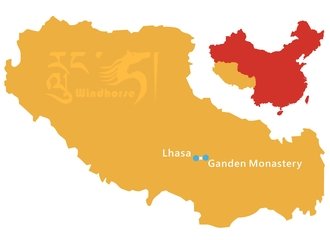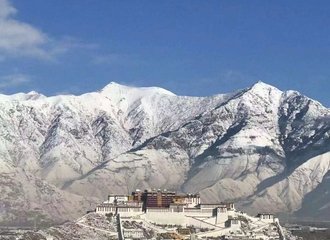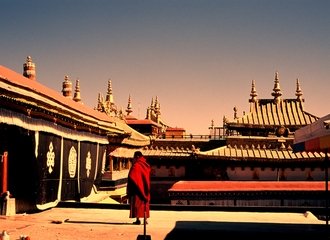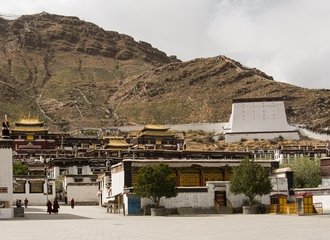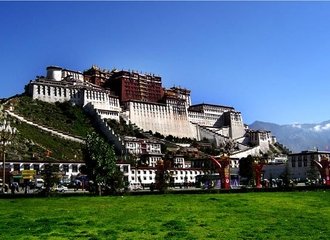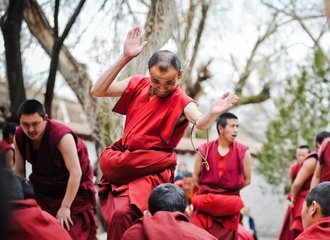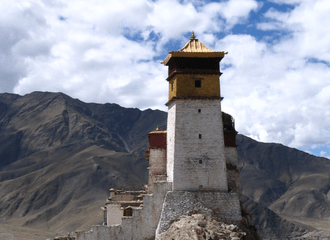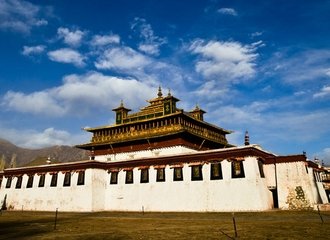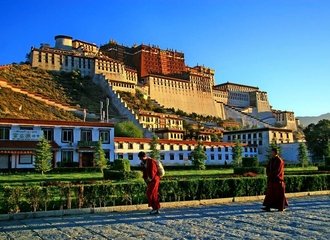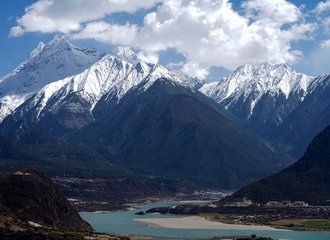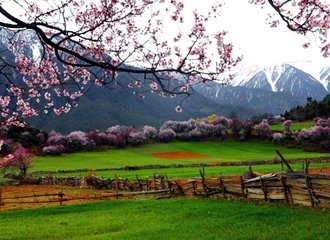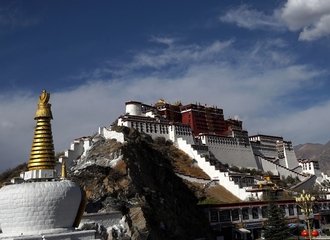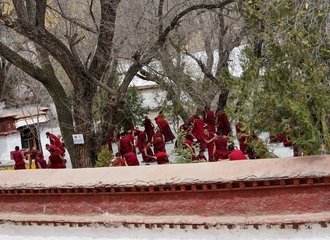Tibetan Buddhism introduction
Tibetan Buddhism, also known as Lamaism, has a history of more than 1,400 years since it was first introduced into Tibet. It is based on Tantra and Yogacara, and belongs to the Mahayana school. Throughout its development it has absorbed and intertwined features of Indian Buddhism, Tibetan Bon religion and Chinese culture, thus appearing to be far more mystical than other forms of Buddhism. Mantras, Mudras, Yantras (sacred art) and secret initiation rituals, etc. all add to its striking characteristics.
The first introduction of Tibetan Buddhism can be dated back to the reign of King Songtsen Gampo in the 7th century AD when Tibet was finally unified and the Tibetan language created. King Songtsen Gampo successively married a Nepalese and a Chinese princess, both of whom brought with them large quantities of Sutras and Buddha statues into Tibet. Then, under the reign of King Trisong Detsen (742-798), the Indian spiritual leader Padmasambhava was invited to Tibet to develop Buddhism. Many monasteries were built and many sutras translated into Tibetan during this period through to the reign of King Tri Ralpa Chen (866-896), Buddhism had had an unprecedented influence in Tibet. Unfortunately, Buddhism was banned and subsequently destroyed when King Lang Darma was enthroned, as he believed in Bon, the oldest indigenous religion of Tibet. During the following century, Tibet experienced a period without Buddhism of any description.
From the year 978 Tibetan Buddhism began a revival, and in the beginning of the 11th century the Indian high priest Atisha (Dipankara Srijnana) came to Tibet to develop Buddhism. The Buddhism that developed utilized some features of Tibetan Bon religion that was in competition with it for followers and was influenced by the shining Chinese culture of the period, thus gaining greater acceptance and popularity than before. More sutras were translated, more monasteries were built and more Buddhists entered Tibet on pilgrimages. Different sects of Tibetan Buddhism began to develop, with every sect having at its core the reincarnation system and the living Buddhas played important roles in politics, the economy and religion. The most important and influential sects are as following:
- Nyingmapa, meaning 'old' in Tibetan, is the oldest Buddhist sect, which dates back to the period when Padmasambhava entered Tibet. As the Nyingmapa Buddhists wear red robes and hats, it is also called Red Sect. In the early period this sect had a loose organizational structure, and no monasteries until the 11th century. Its followers were widely dispersed and could marry. This sect attached much importance to mantra practice and retained many more features of the Bon religion than other sects, thus was believed to have more piety. Famous Nyingmapa monasteries include Dorje Drak Monastery and Mindroling Monastery , Padmasambhava is esteemed as the founder of this sect.
- Sakyapa was founded in the 11th century and it developed into a sect with strong political power in the 13th century. The Sakyapa Buddhists wear red cassocks and red lotus-shaped hats. They are allowed to marry, but after a son is born, they can never get close to a woman again. The doctrines of Sakyapa instruct people to do good deeds so as to attain good incarnation in next life 'samsara'. Its main monastery is Sakya Monastery . Because the wall of the monastery is painted with red, white and black strips, this sect is also called Colorful Sect. Sakya Monastery, which holds more than ten thousand kinds of precious sutras is really a bright pearl among Buddhist monasteries, praised as the second Dunhuang in China.
- Kadampa, which means Buddha's deeds and instructions should be doctrines of enlightenment, was founded by Atisha. Kadampa and was different from other sects in that it gave priority to Exoteric Buddhism rather than Esoteric Buddhism, and its Tantra and Yoga remained pure compared with other sects. Kahdampa believed in samsara and retribution and had a rapid development, retaining its influential role owing to its systematic and standard doctrines. Its main shrine is Nechung Monastery, the rectors of which once were the regents of the Tibetan government when Dalai Lamas were young later evolved into Gelugpa.
- Kagyu came into being in the mid 11th century, and had many sub sects in its later development. It was also called White Sect as its Buddhists wear white frocks. This sect held great influence around Tibet, from which the reincarnation system of Buddhism originated. The doctrines of this sect are unique, believing every man has the nature of Buddha and stressing on asceticism and obedience rather than written sutras to gain enlightenment. Its main monastery is Tsurphu Monastery , the traditional seat of its lamas. This sect took the political power of Tibet from the mid 14th century to the early 17th century.
- Gelugpa, the latest Buddhist sect in Tibet was founded upon the teachings of Kadampa, by Tsong Khapa, a great Buddhist reformer of the mid 15th century. Since its Buddhists wear yellow hats, it is also called Yellow Hat Sect. Its doctrines stress strict discipline and the study of scriptures and its successful reformation made it the leading sect in Tibet, and this sect won control of the Tibet from the early 17th century. In addition, the sect soon began to spread widely outside Tibet due to its formidable political influence. It has six main monasteries, namely Ganden Monastery , Drepung Monastery, Sera Monastery, Tashilhunpo Monastery, Ta'er Monastery and Labrang Monastery.
Tibetan Buddhism reached its height of power and splendor during the period between the founding of Gelugpa through to the mid 20th century. Since then, it has started to spread throughout the world. Its intensive philosophy, unique tantras, profound cultural connotation and communal values concept can commendably fill the lack of spiritual life often found in our modern times, and thus has become more and more popular. Now, in Europe, North America, Macau, Hong Kong, etc, the number of people who take Tibetan Buddhism as their belief is continuing to increase at an ever-increasing speed, making it a truly international religion.


